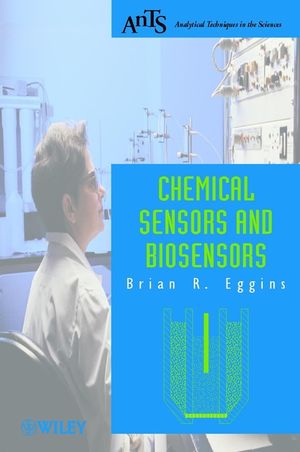Chemical Sensors and BiosensorsISBN: 978-0-471-89914-3
Paperback
300 pages
April 2002
 This is a Print-on-Demand title. It will be printed specifically to fill your order. Please allow an additional 10-15 days delivery time. The book is not returnable.
|
||||||
Series Preface
Author's Preface
Acronyms, Abbreviation and Symbols
About the Author
Introduction
Introduction to sensors
Sensors and biosensors - definitions
Aspects of sensors
Transduction Elements
Electrochemical transducers - introduction
Potentiometry and ion selective electrodes: the Nernst equation
Voltammetry and amperometry
Conductivity
Field effect transistors
Modified electrodes, thin film electrodes, microelectrodes and screen printed electrodes
Photometric sensors
Sensing Elements
Introduction
Ionic recognition
Molecular recognition - chemical recognition agents
Molecular recognition - spectroscopic recognition
Molecular recognition - biological recognition agents
Immobilisation of biological component
Performance Factors
Introduction
Selectivity
Sensitivity
Time factors
Precision, accuracy and repeatability
Different biomaterials
Different transducers
Some factors affecting the performance of sensors
Electrochemical Sensors and Biosensors
Potentiometric sensors - ion selective electrodes
Potentiometric biosensors
Amperometric sensors
Conductometric sensors and biosensors
Applications of FET sensors
Photometric Applications
Techniques for optical sensors
Visible absorption spectroscopy
Fluorescent reagents
Indirect methods using competitive binding
Reflection methods
Light scattering techniques
Mass Sensitive and Thermal Sensors
The piezo-electric effect
Surface acoustic waves
Thermal sensors
Some Specific Applications
Determination of glucose in blood - amperometric biosensor
Determination of ng levels of copper (I) in water using anodic stripping voltammetry using an electrode modified with a complexing agent
Determination of several ions simultaneously - "the laboratory on a chip"
Determination of ato-mole levels of trinitrotoluene (TNT) - antibody with a luminescent transducer
Determination of flavanols in beers
Author's Preface
Acronyms, Abbreviation and Symbols
About the Author
Introduction
Introduction to sensors
Sensors and biosensors - definitions
Aspects of sensors
Transduction Elements
Electrochemical transducers - introduction
Potentiometry and ion selective electrodes: the Nernst equation
Voltammetry and amperometry
Conductivity
Field effect transistors
Modified electrodes, thin film electrodes, microelectrodes and screen printed electrodes
Photometric sensors
Sensing Elements
Introduction
Ionic recognition
Molecular recognition - chemical recognition agents
Molecular recognition - spectroscopic recognition
Molecular recognition - biological recognition agents
Immobilisation of biological component
Performance Factors
Introduction
Selectivity
Sensitivity
Time factors
Precision, accuracy and repeatability
Different biomaterials
Different transducers
Some factors affecting the performance of sensors
Electrochemical Sensors and Biosensors
Potentiometric sensors - ion selective electrodes
Potentiometric biosensors
Amperometric sensors
Conductometric sensors and biosensors
Applications of FET sensors
Photometric Applications
Techniques for optical sensors
Visible absorption spectroscopy
Fluorescent reagents
Indirect methods using competitive binding
Reflection methods
Light scattering techniques
Mass Sensitive and Thermal Sensors
The piezo-electric effect
Surface acoustic waves
Thermal sensors
Some Specific Applications
Determination of glucose in blood - amperometric biosensor
Determination of ng levels of copper (I) in water using anodic stripping voltammetry using an electrode modified with a complexing agent
Determination of several ions simultaneously - "the laboratory on a chip"
Determination of ato-mole levels of trinitrotoluene (TNT) - antibody with a luminescent transducer
Determination of flavanols in beers



